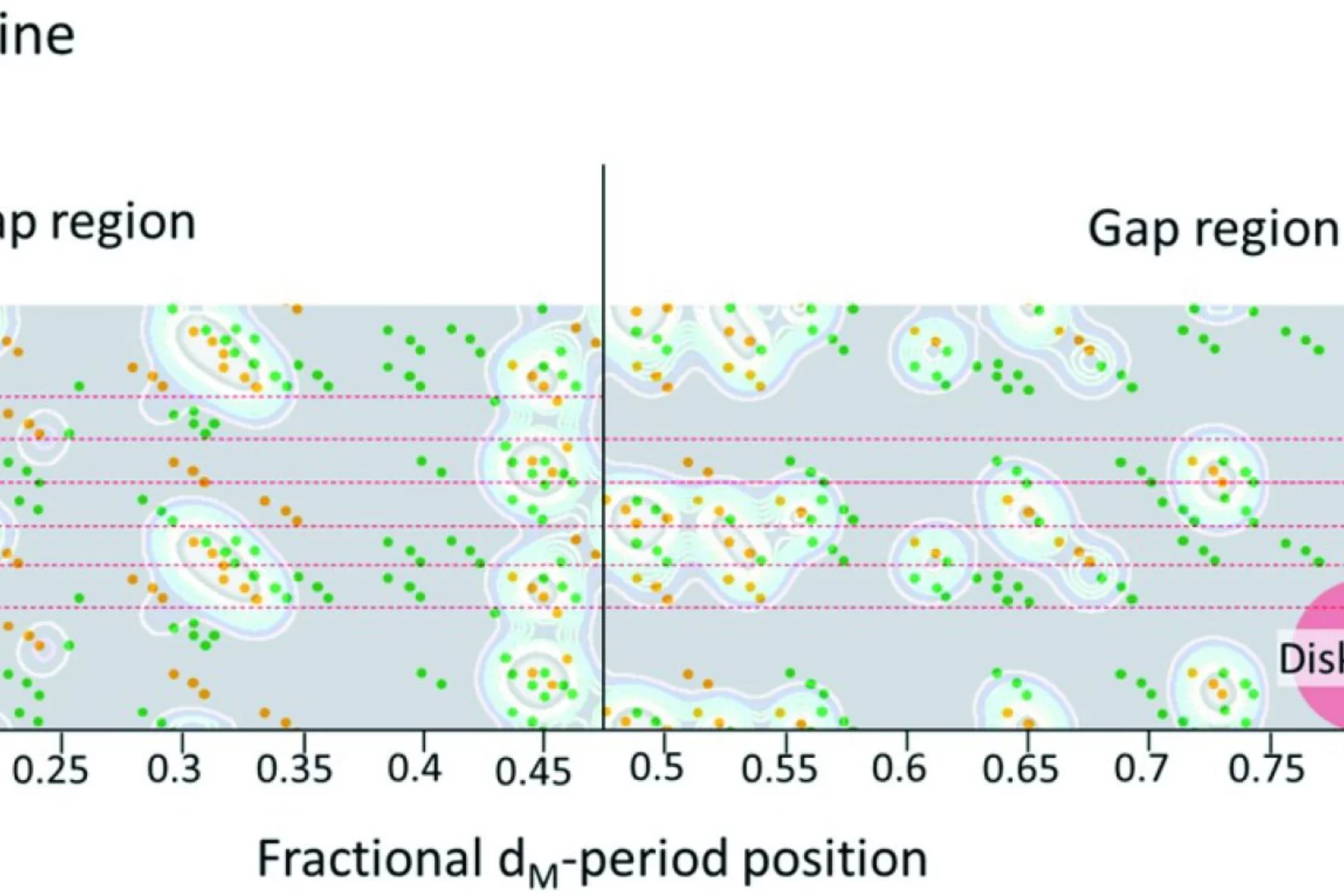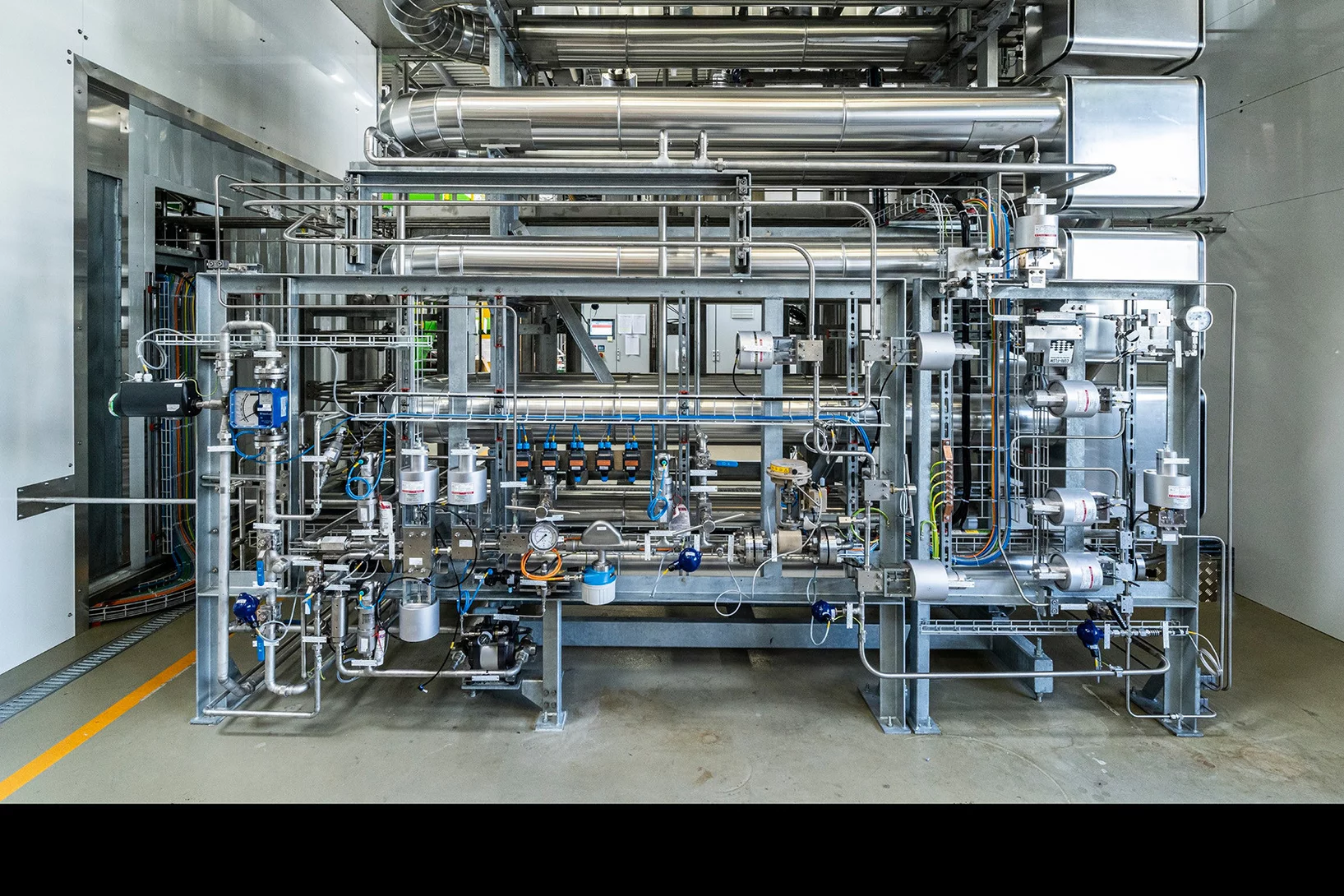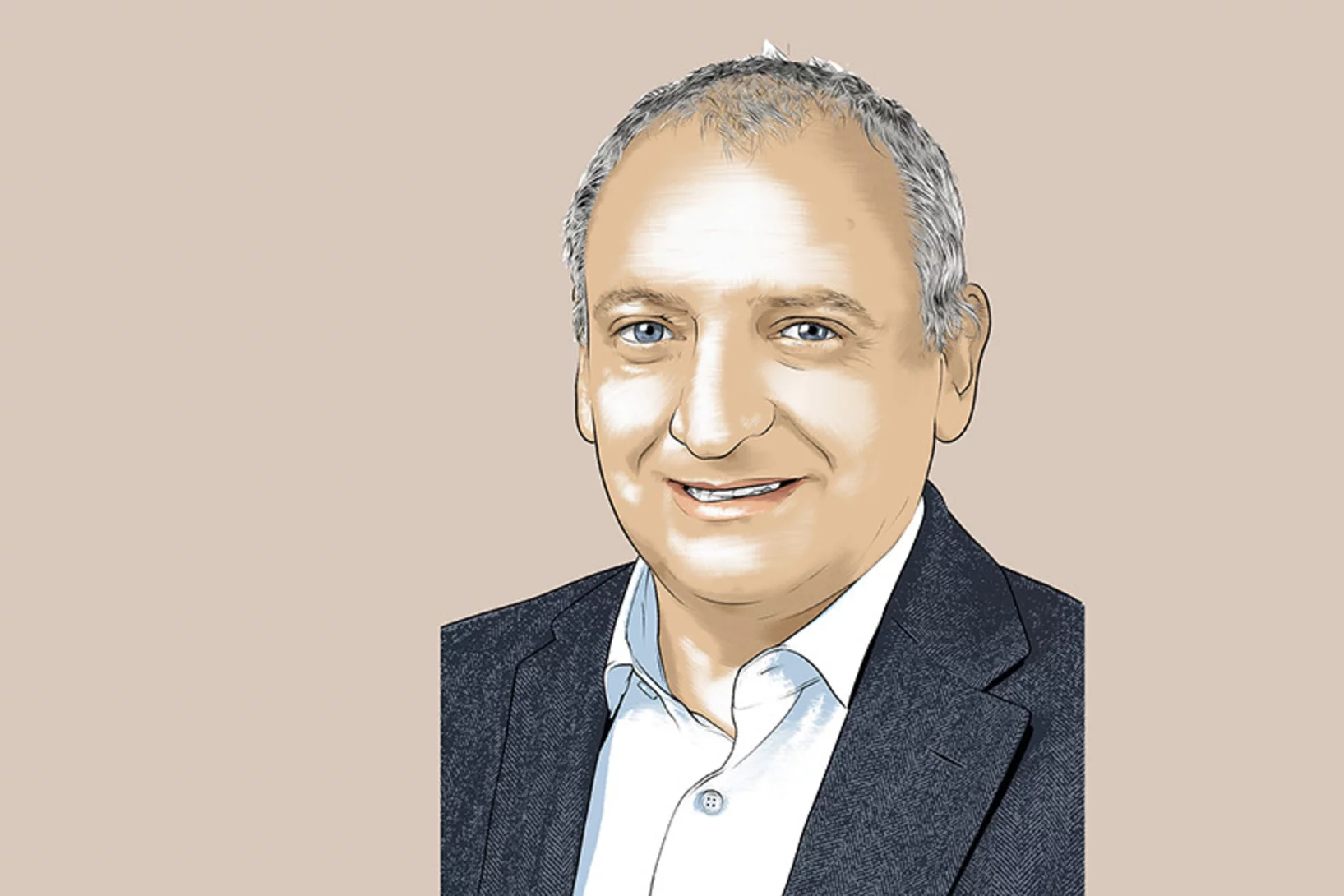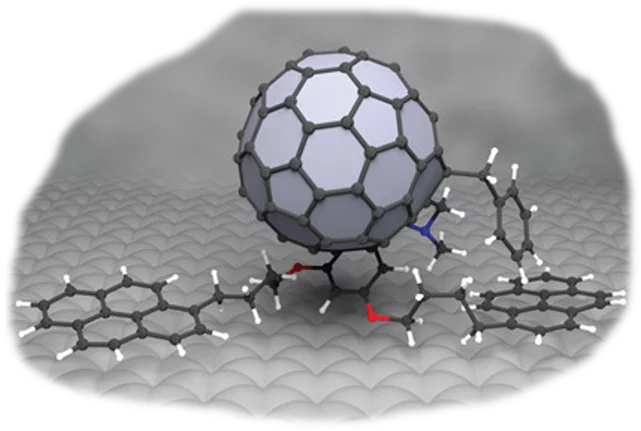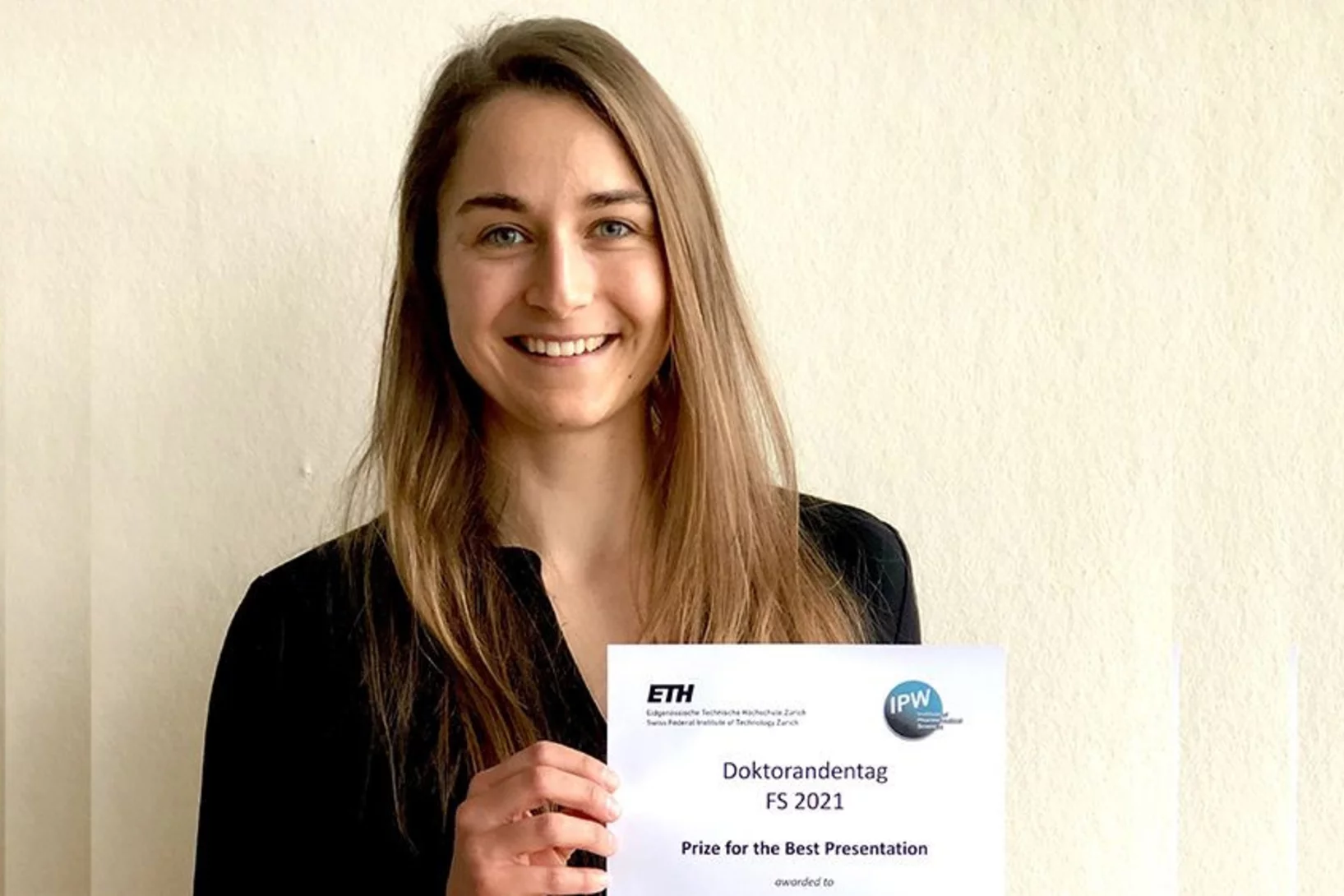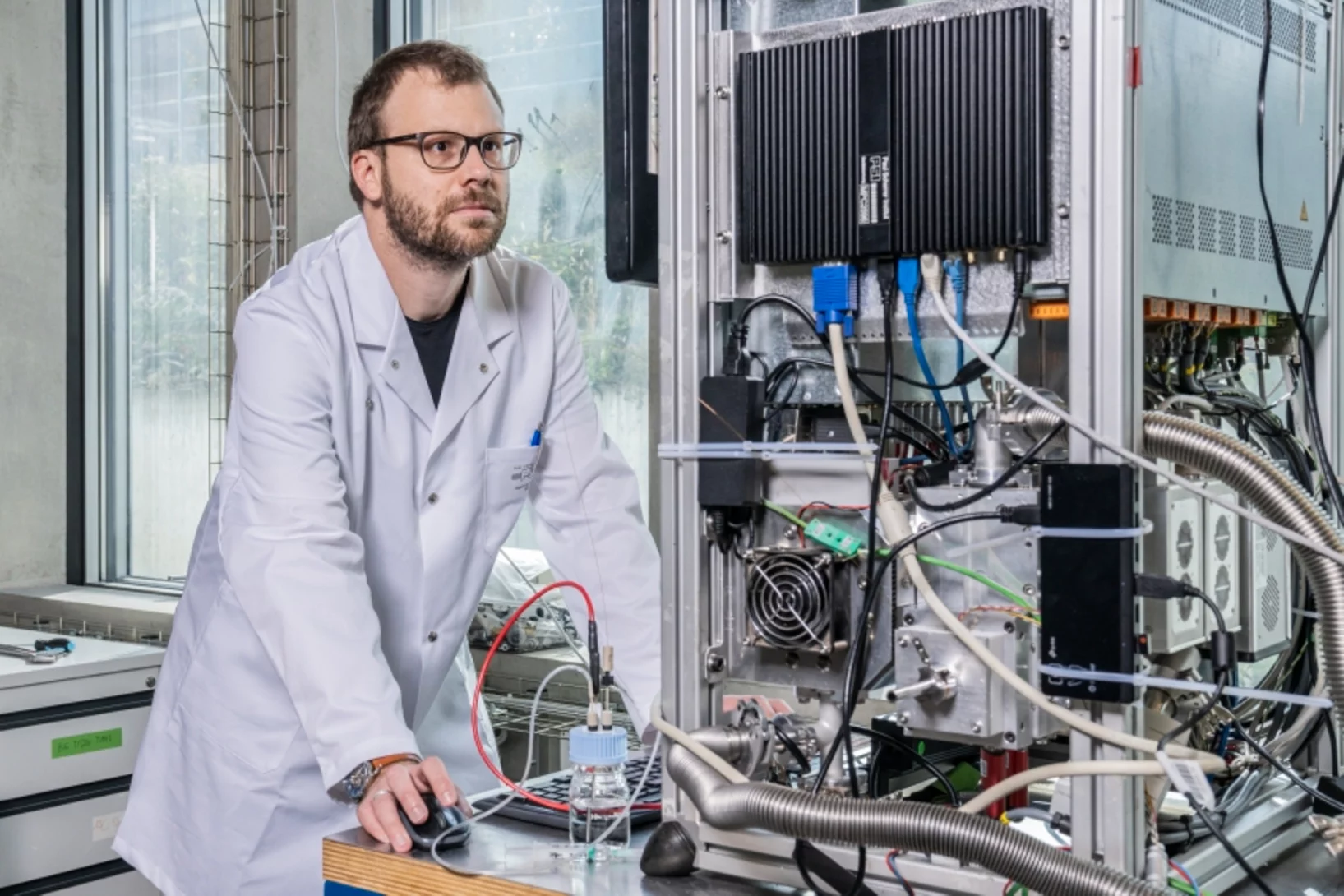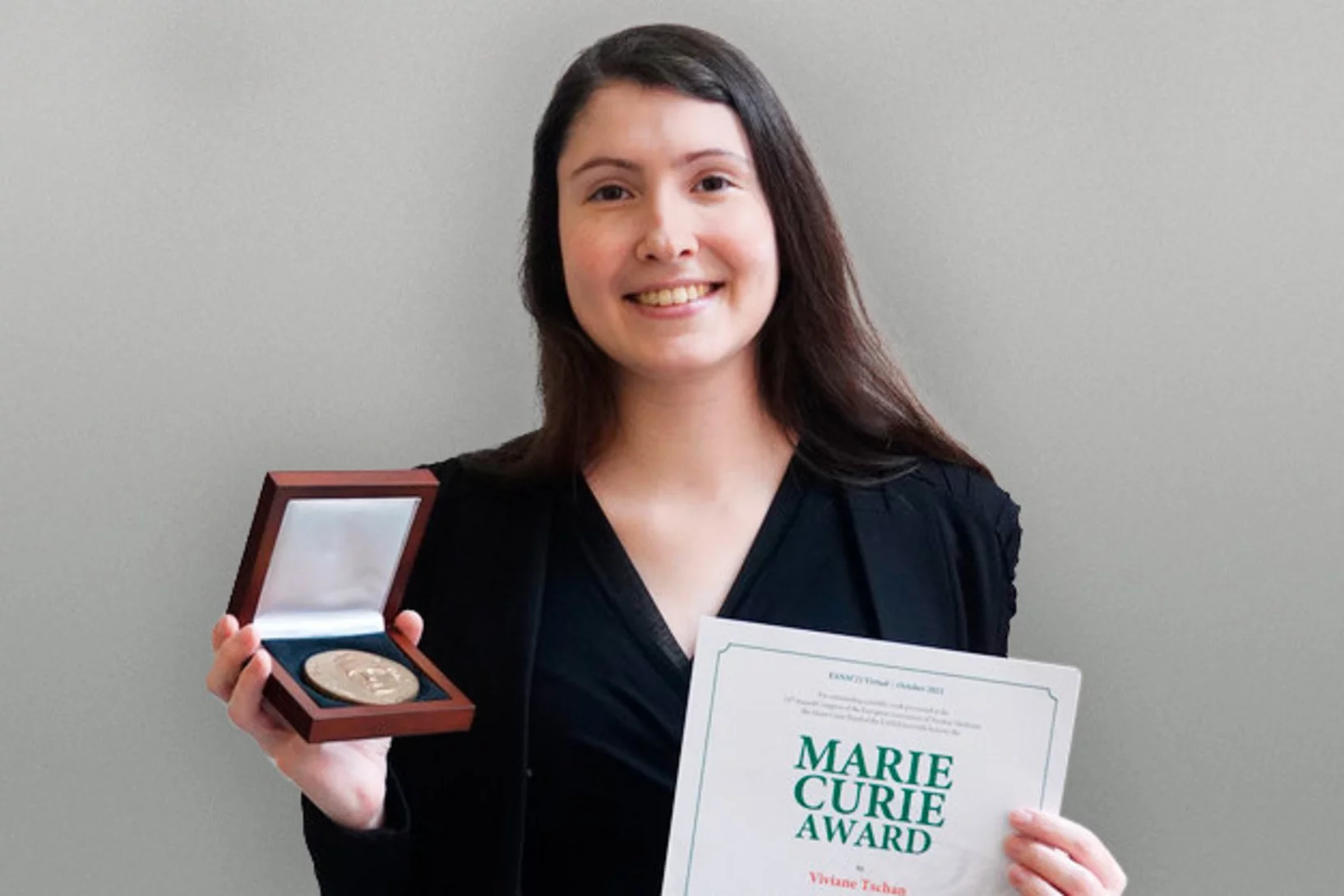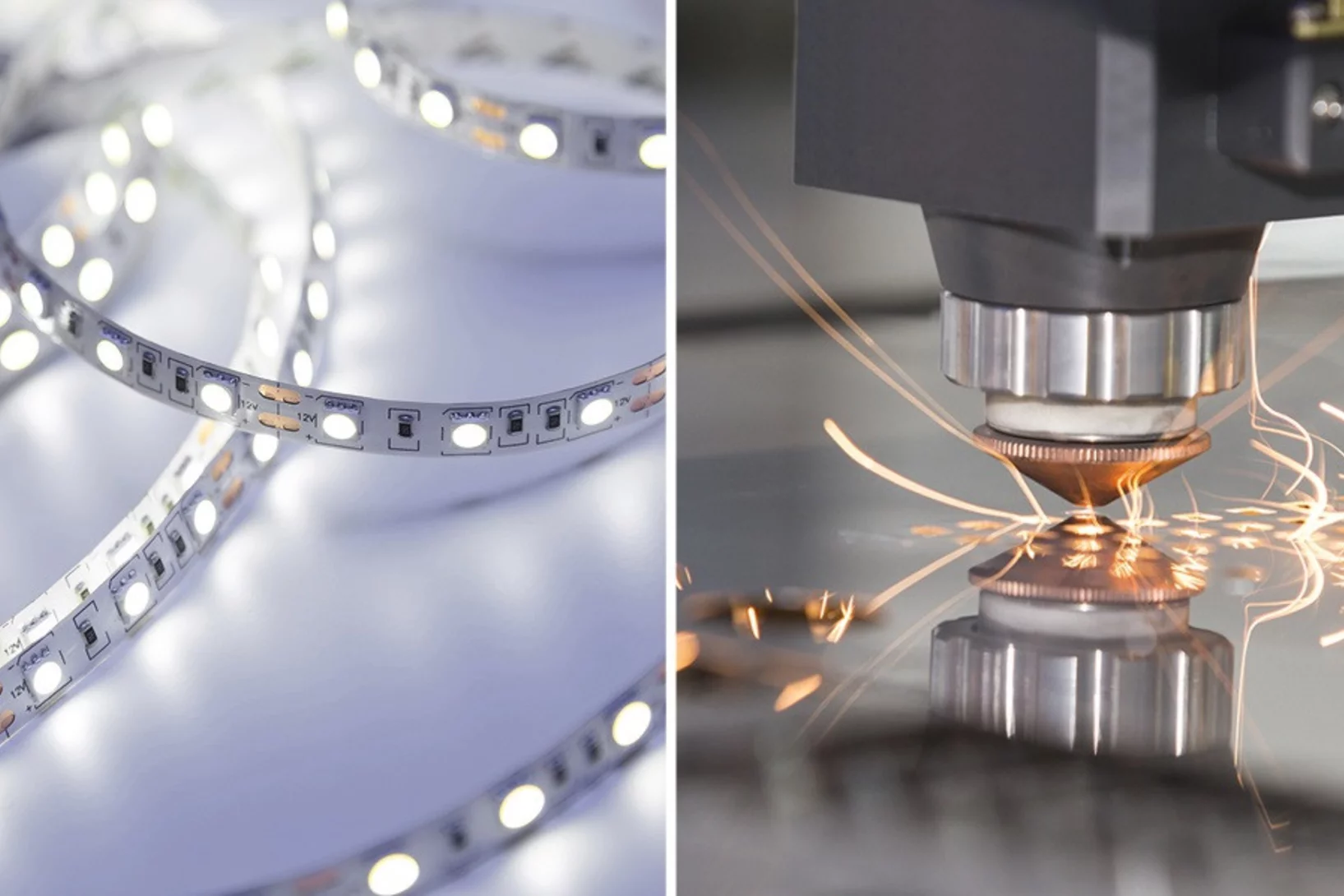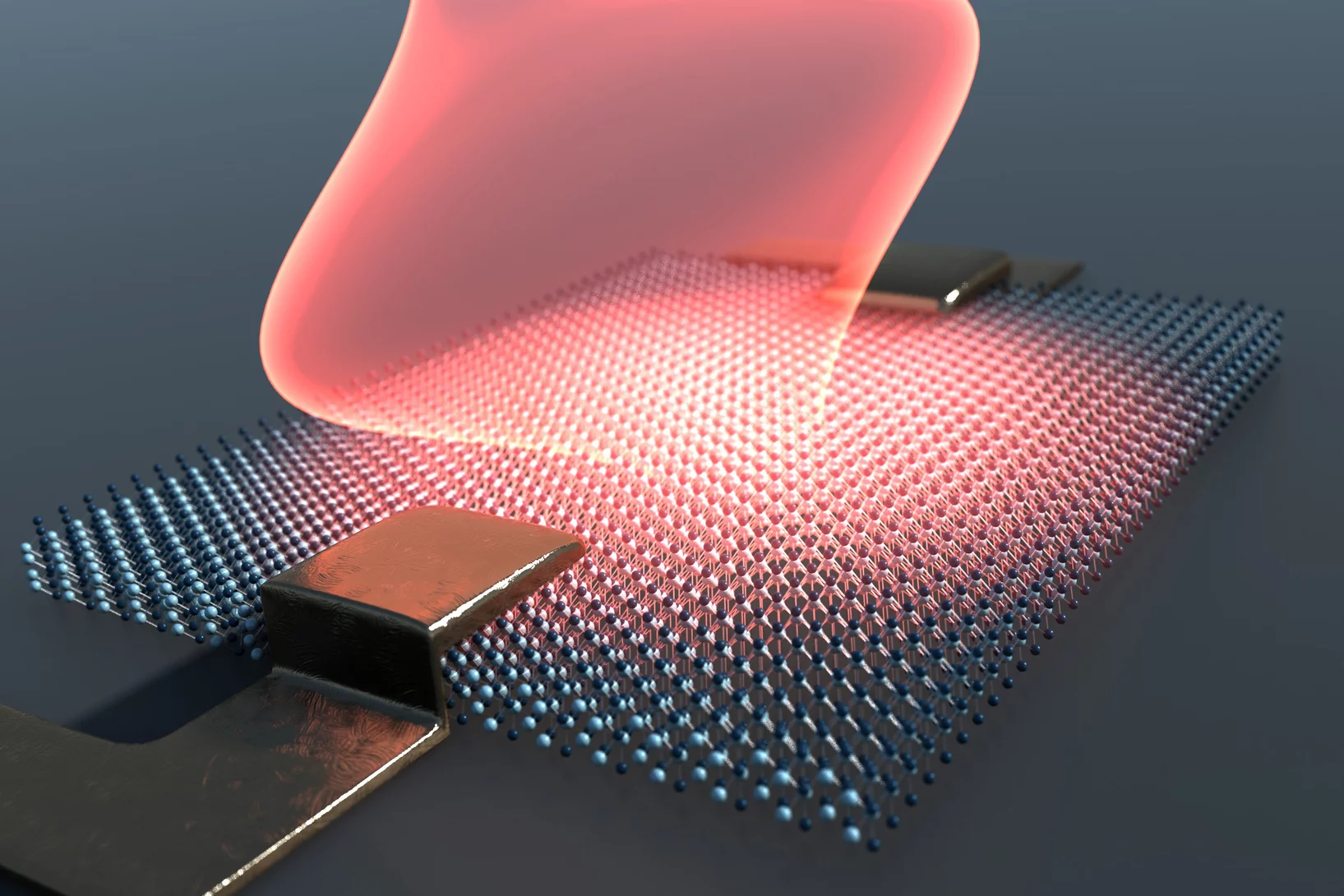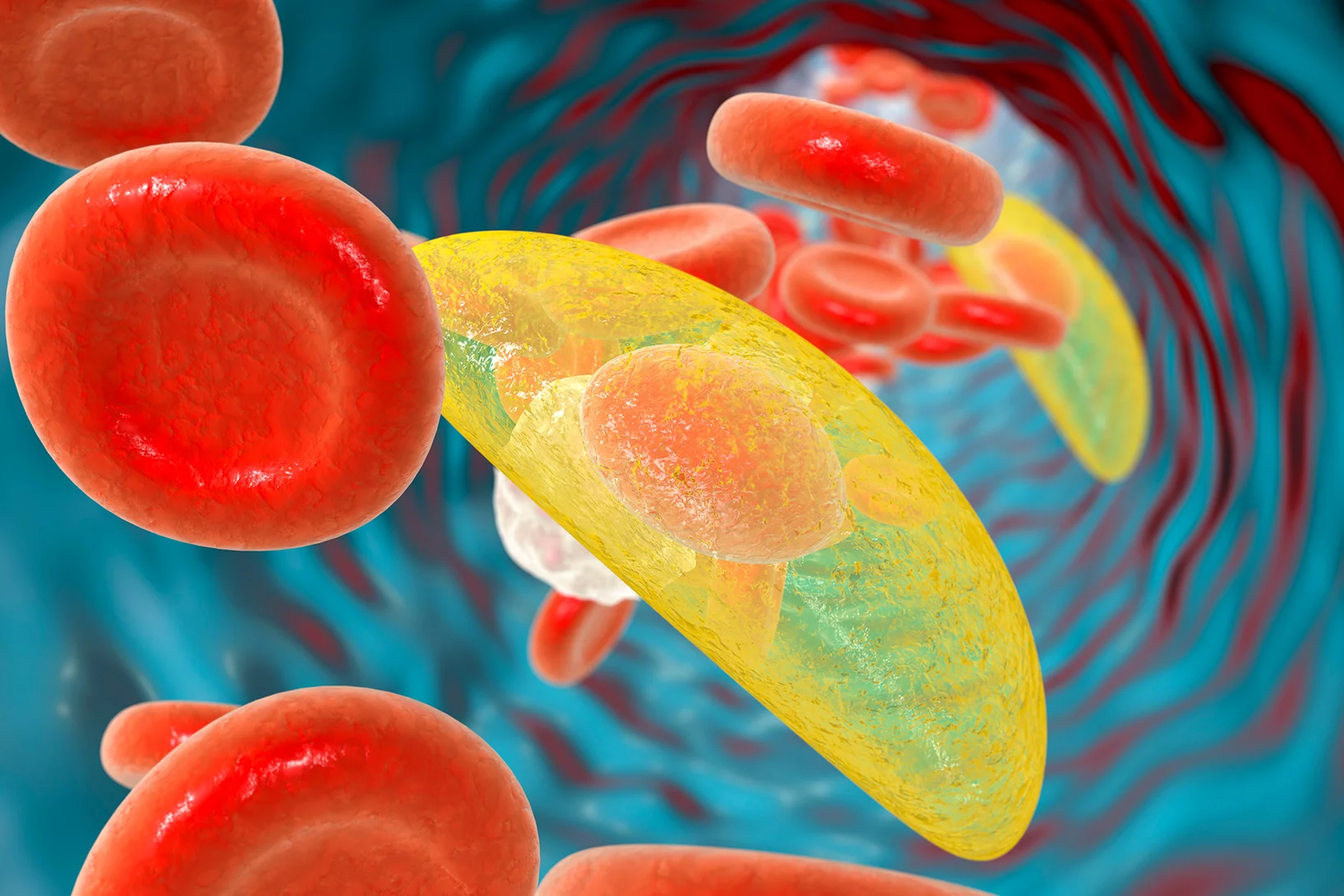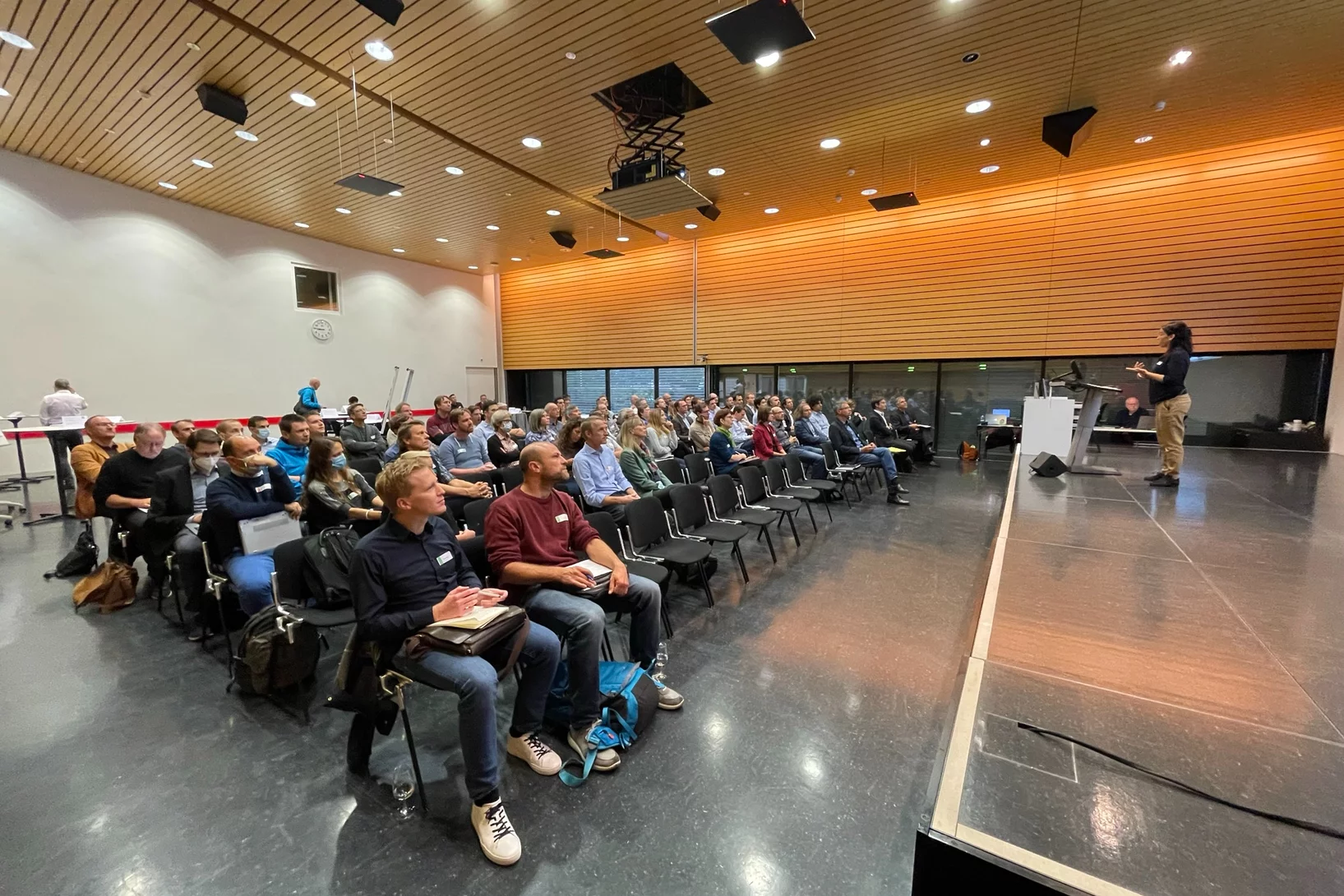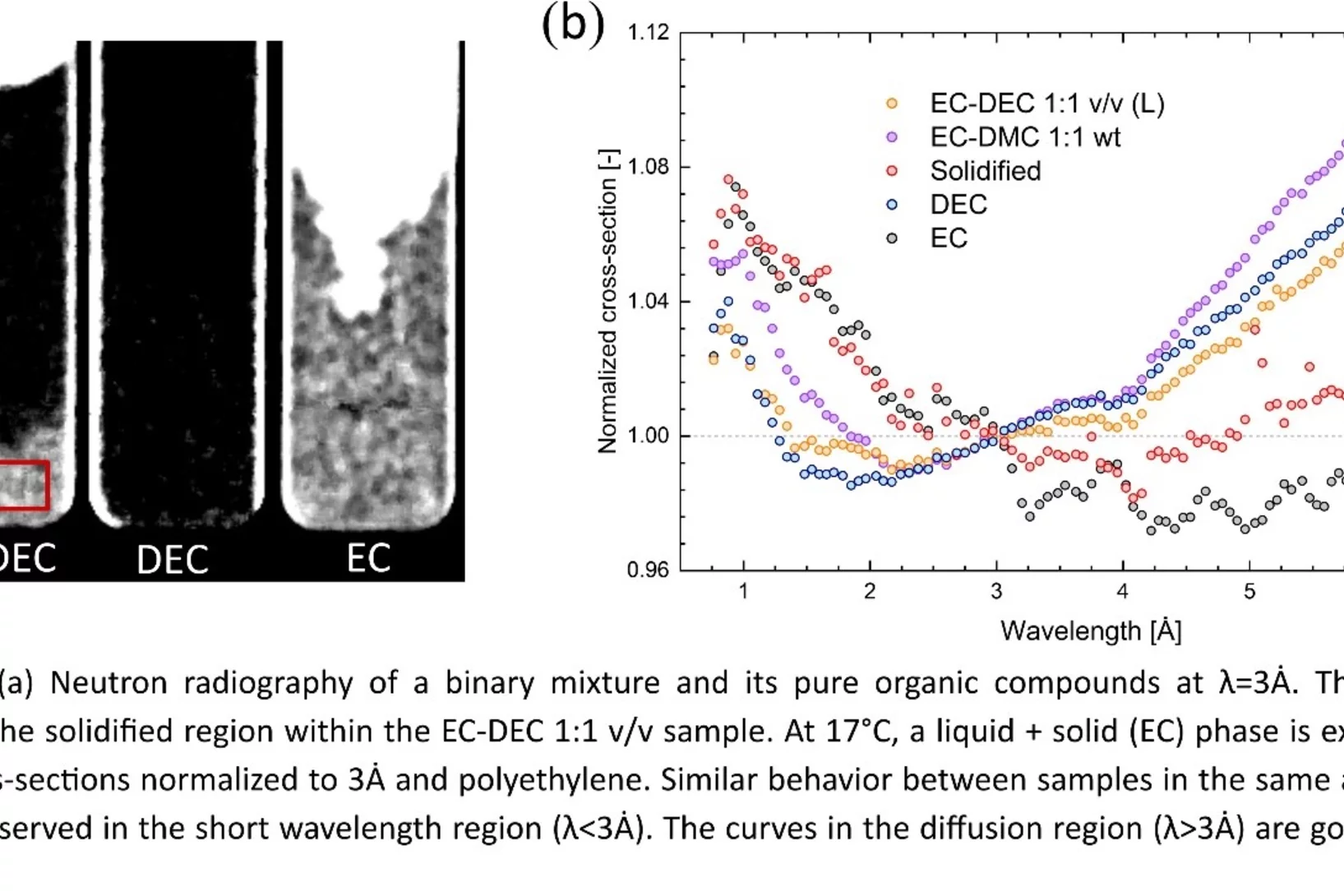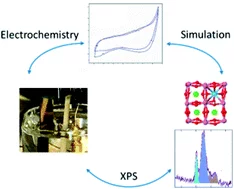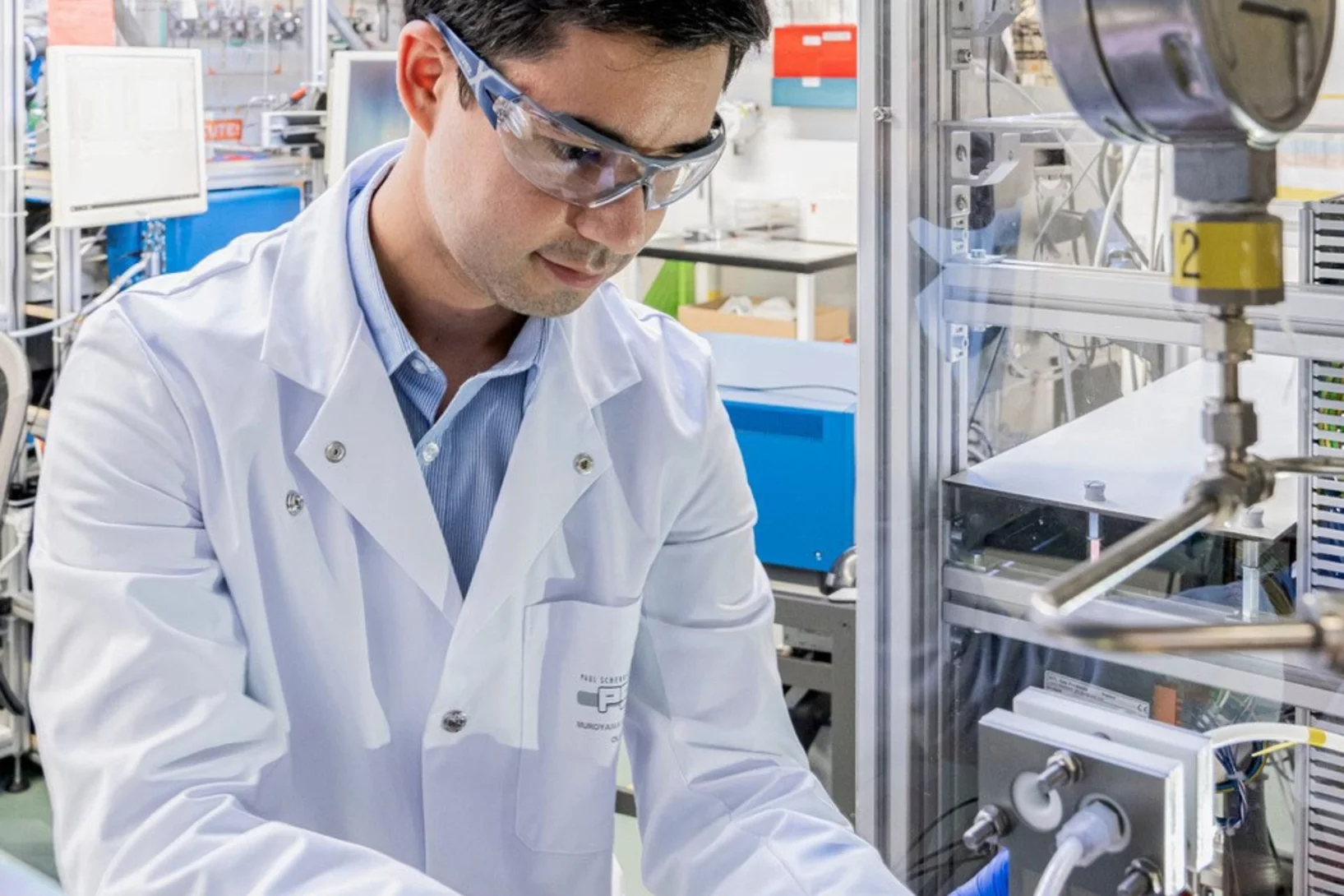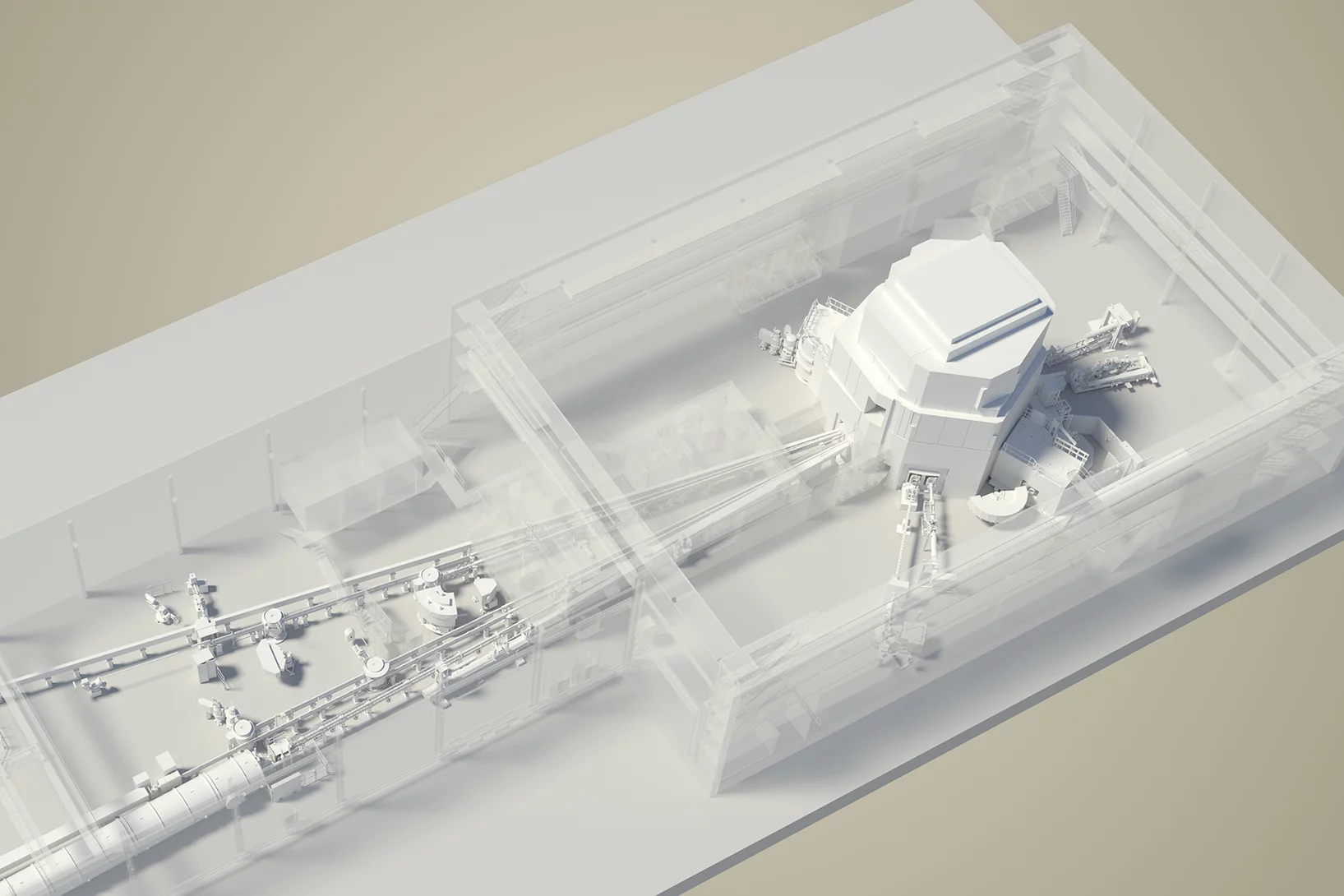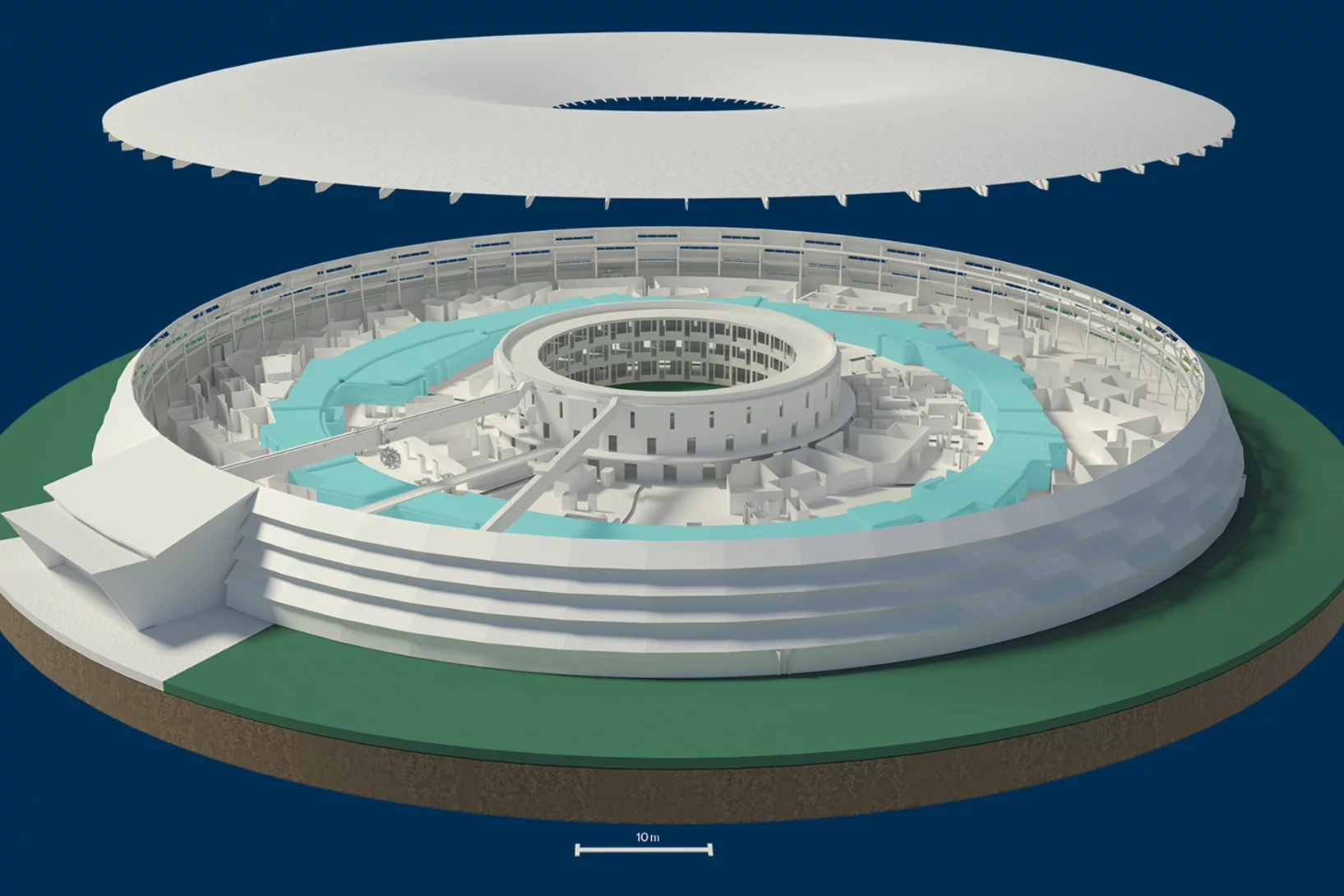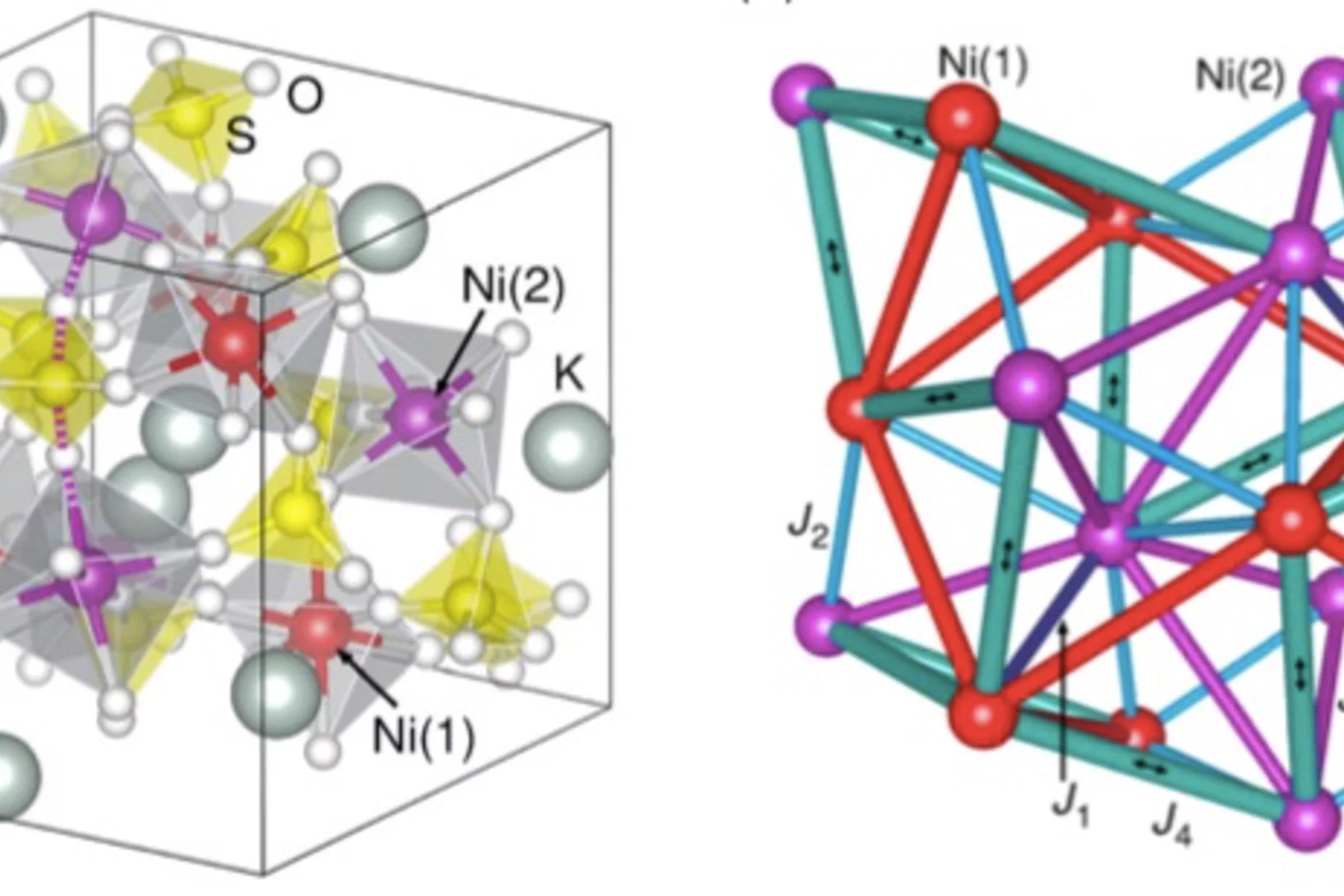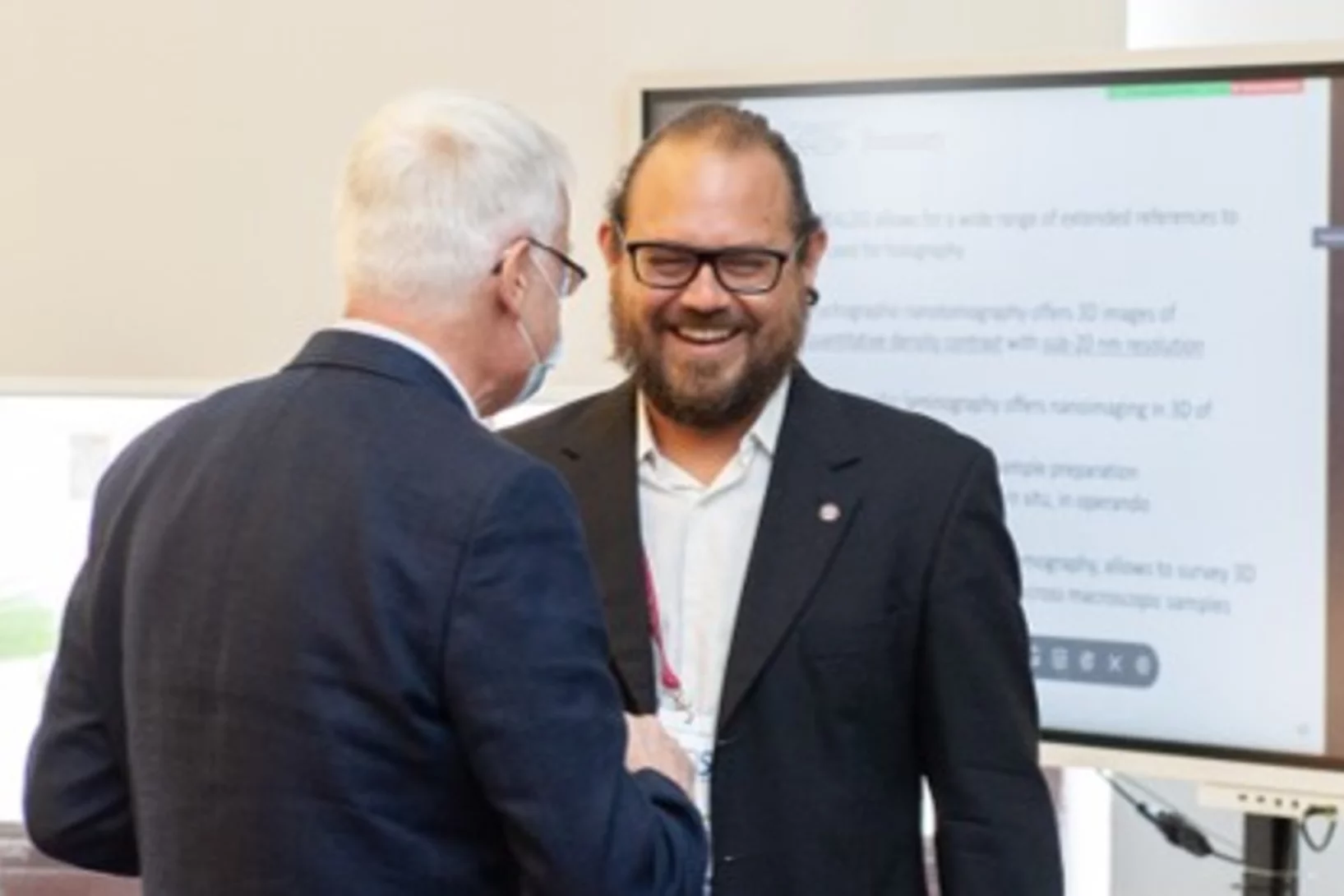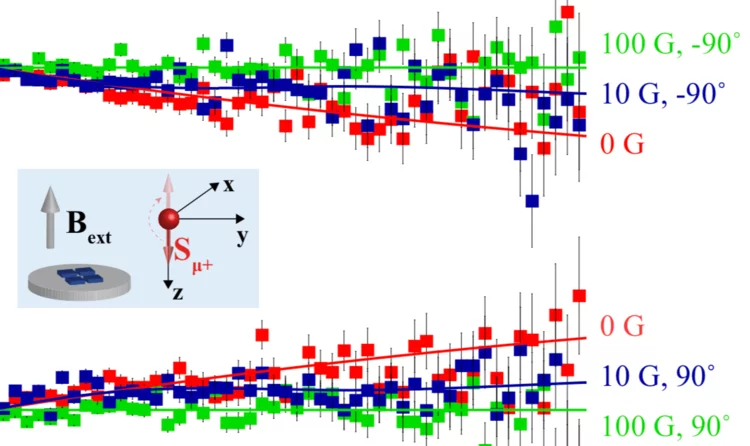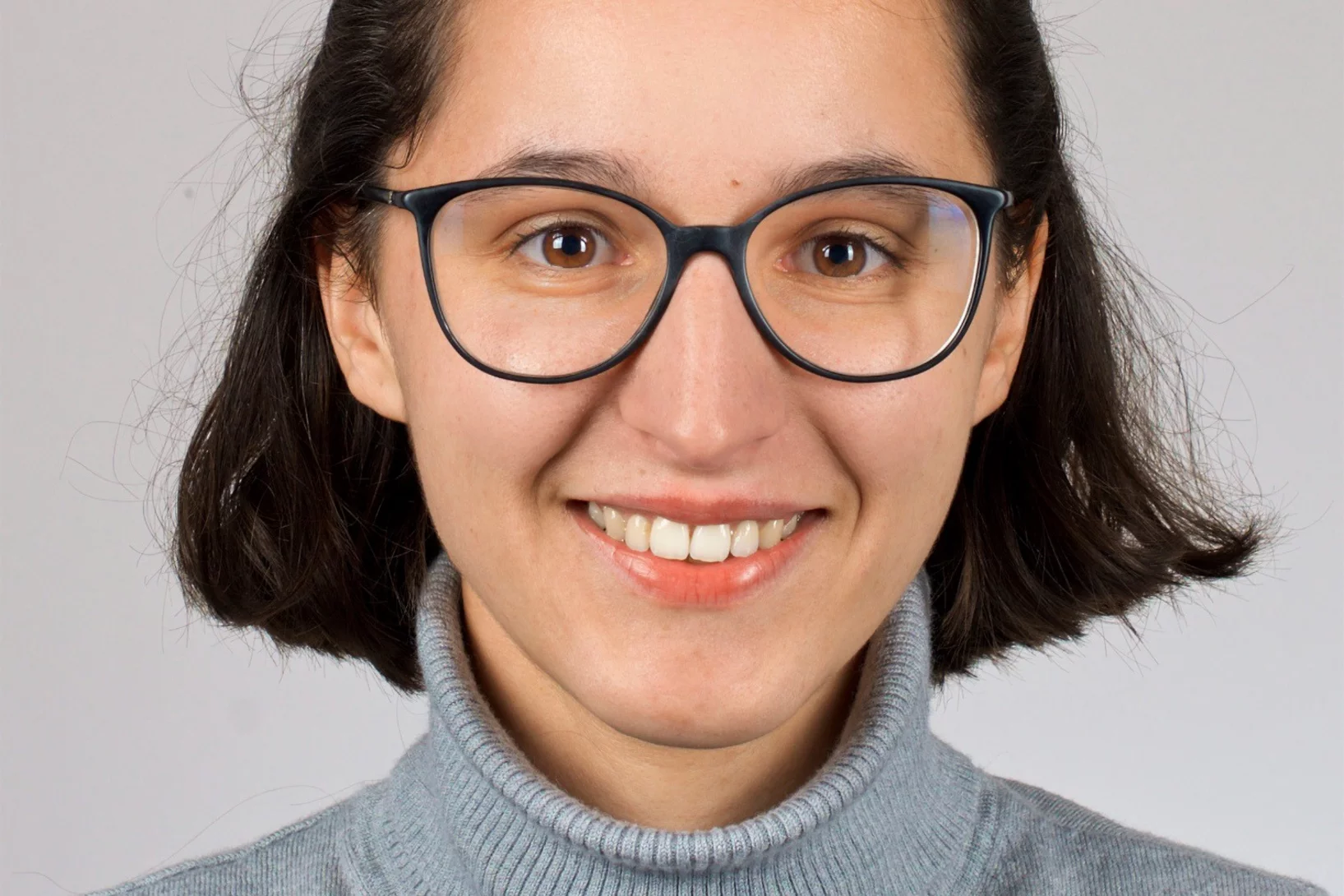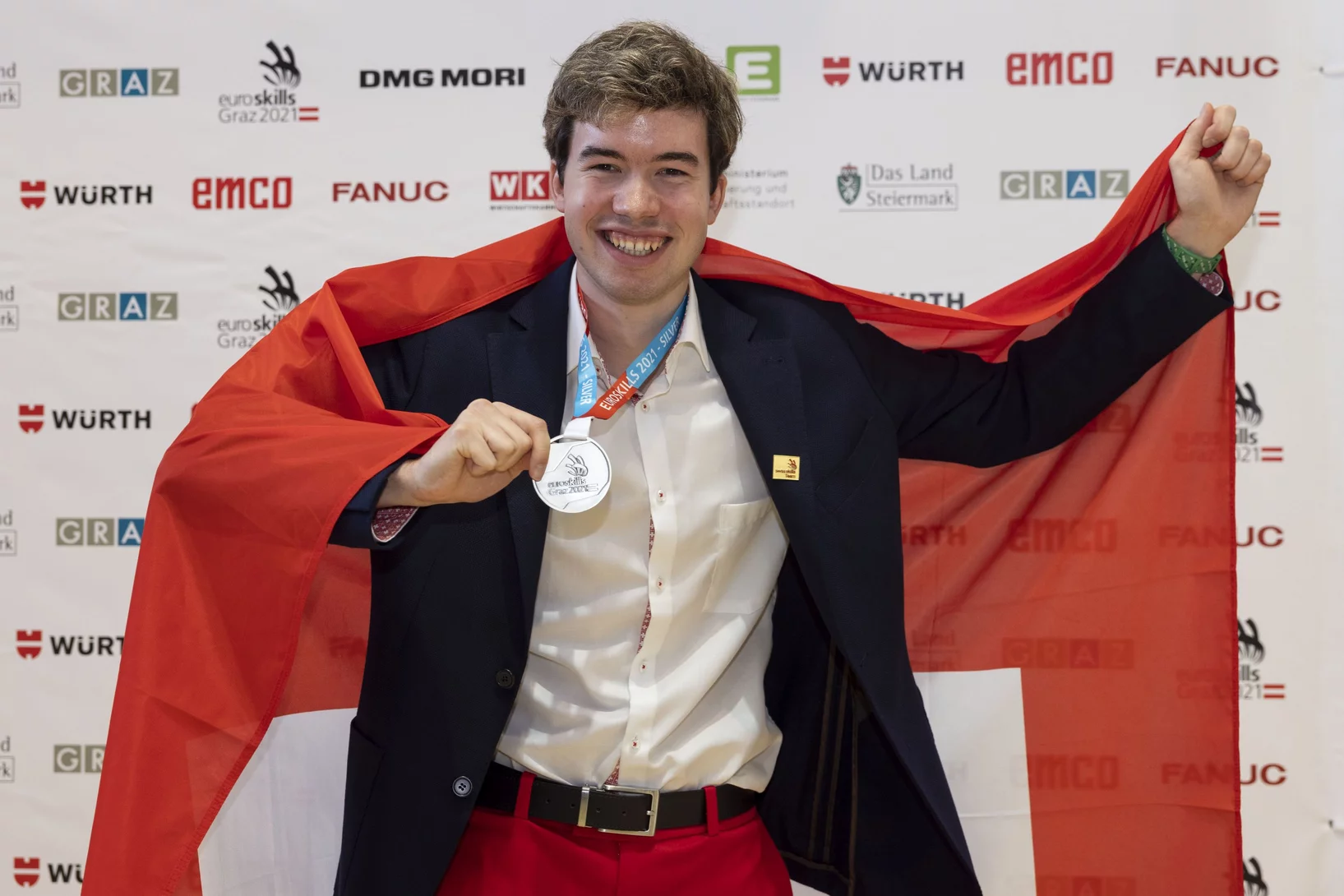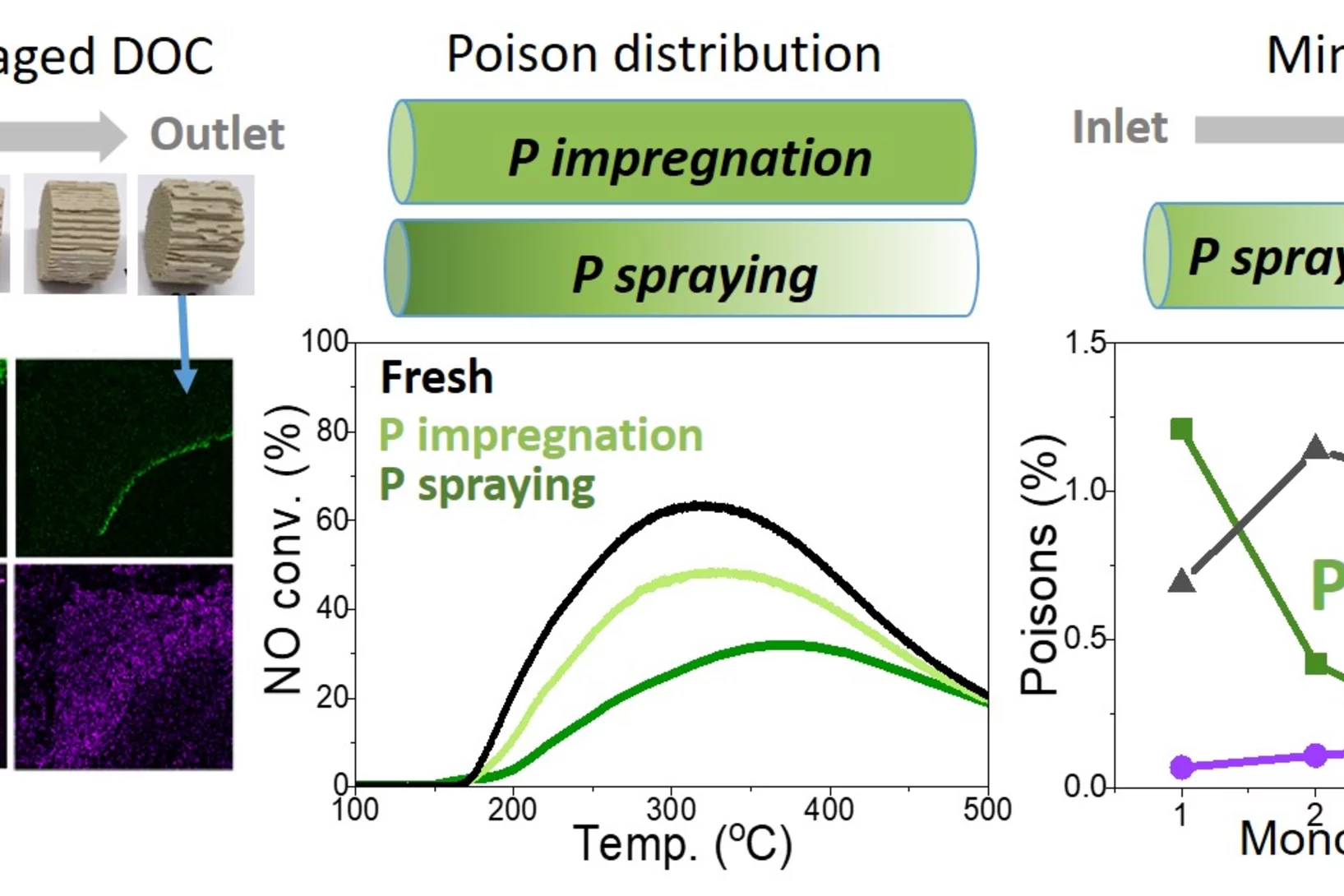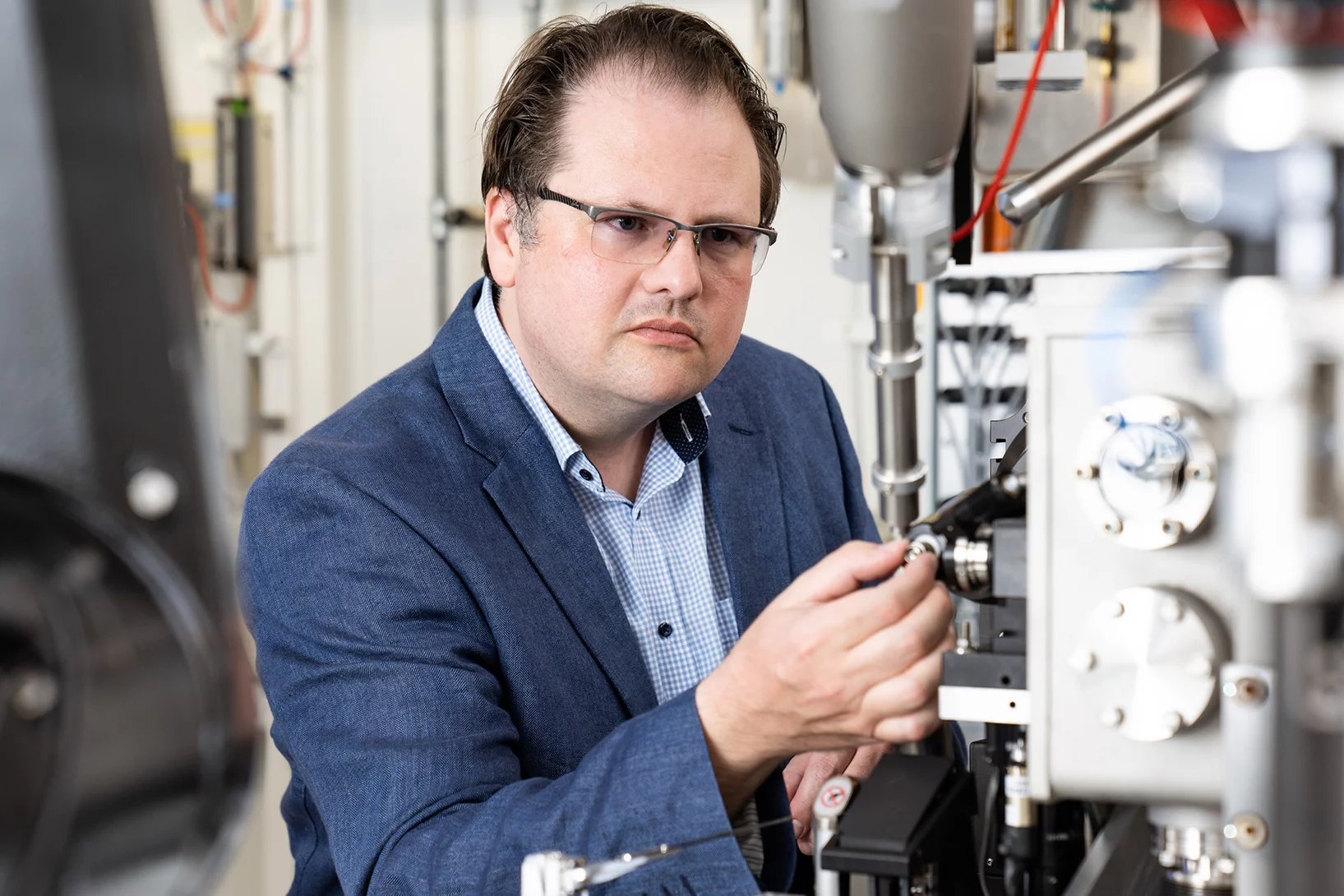Shifting away from nuclear energy, expanding solar and wind power, generating energy from biomass, reducing energy consumption. Switzerland is committed to becoming climate-neutral by 2050. An ambitious goal, which has become more urgent than ever due to the increasingly challenging geopolitical situation. How can a sustainable and resilient energy supply for Switzerland be established over the coming years? What's the optimal way to use renewable energy sources? What new technologies are especially promising? At PSI, researchers are seeking answers to these crucial questions.
Glycation of collagen: Quantifying rates
Collagen is abundant in the connective tissue of human beings, e.g. in tendons, ligament and cornea. Glycation of collagen distorts its structure, renders the extracellular matrix stiff and brittle and at the same time lowers the degradation susceptibility thereby preventing renewal. Based on models and with parameters determined from experimental data, we describe the glycation of type 1 collagen in bovine pericardium derived bio-tissues upon incubation in glucose and ribose. We hope that this contributes to a better quantitative understanding of the effects of diabetes on collagen.
Getting maximum energy out of biomass
Researchers at the Paul Scherrer Institute PSI start operation of a revolutionary pilot plant for production of synthetic biogas.
Protein Distancing
Using a protein fusion approach that uses a modular linker PSI Researchers can now connect two unrelated proteins at a defined distance and orientation to each other. This technology could allow for applications e.g. in vaccine development or could facilitate the crystallization of proteins for drug development. Furthermore, the linker holds potential as a component in protein-based nanomaterials. Feel free to contact us if you are interested in learning more about this exiting technology.
https://www.psi.ch/en/media/our-research/protein-distancing
Unique and unusual
An interview with Mike Seidel, Head of the Large Research Facilities Division.
Magnetic Bistability at a Record High Temperature in a Sub-Monolayer of Endohedral Fullerenes
A team of the Leibniz Institute for Solid State Research (IFW) from Dresden, Germany, led by Dr Alexey Popov has now demonstrated a record blocking temperature of 28 Kelvin at which the magnetic bistability still survives in a submonolayer of a chemically functionalized species of endofullerenes. In this research, X-ray magnetic circular dichroism measurements at low temperatures and high magnetic field at the X-Treme beam line are crucial. The results pave the way toward using such single-molecule magnets as information carriers or magnetic bits.
Presentation Prize 2021 (Doktorandentag, Institute of Pharmaceutical Sciences, ETH Zurich)
Luisa Deberle, PhD student in the “Nuclide Chemistry Group” received the price for the best oral presentation
Successful Ambizione Grant Applicant
Kaspar Dällenbach, Scientist at the Laboratory of Atmospheric Chemistry (LAC) at the Paul Scherrer Institute (PSI) was granted the Ambizione Grant 2020 with his project “Particulate air pollution sources in low-income megacities (PRESSING)”.
EANM Marie-Curie Award 2021 went to VIVIANE TSCHAN
Viviane Tschan received this year’s Marie-Curie Award for a new concept of radioligand therapy of prostate cancer.
Anlass "Nano & Industrie 2021: Anwendungen in der Photonik"
Der Anlass wird durch das Hightech Zentrum Aargau organisiert und richtet sich an Entwickler, Hersteller und Anbieter von Photonik- und Optik-Komponenten sowie Interessierte, die mehr über die neuesten Möglichkeiten photonischer Komponenten und deren Einsatz erfahren wollen. Die Teilnehmenden erhalten einen Überblick darüber, wie Photonik-Systeme und -Komponenten für technologische Innovationen und neue Produkte nutzbar gemacht werden können. Referenten aus Industrie und angewandter Forschung zeigen Trends und erläutern, wie die Kombination mit anderen Technologien funktioniert und welche Netzwerke in der Entwicklung eine Rolle spielen.
Die Agenda und sowie das Anmeldeformular sind unter folgendem Link zu finden:
www.nano.swiss/photonik
Ort: Hightech Zentrum Aargau AG, Badenerstrasse 13, 5200 Brugg
Kosten: Die Teilnahme ist kostenlos, eine Anmeldung jedoch erforderlich (Teilnehmerzahl begrenzt).
Ultrafast control of quantum materials
Using light to fundamentally change the properties of solids
New active agent against parasites
PSI researchers identify potential active agent against several unicellular parasites – including the pathogens that cause malaria and toxoplasmosis.
Technology Briefing: Advanced Manufacturing
Thursday, 25th November 2021, from 13:30 to 18:00
Paul Scherrer Institut, 5232 Villigen PSI, Auditorium (PSI West)
Program and online registration: https://indico.psi.ch/event/Anmeldung
The "Technology Briefing" aims at informing our industry partners and SMEs about current practical issues in the field of advanced manufacturing. In addition, the event enables the direct exchange of experiences with experts from CSEM, Empa, PSI, Hightech Zentrum, ANAXAM, as well as from industry.
NET ZERO Day of the four RIs at Empa
Climate change is one of the biggest challenges humanity is facing. It requires an approach, in which competences and capacities in research are combined across Switzerland to develop solutions for a transformation of our society towards net zero CO2 emissions.
Towards in situ imaging of electrolyte physical and chemical changes in Li-ion batteries
The Lithium conducting electrolyte is a critical component of Li-ion batteries, as it has an important impact on performance and its durability, in particular in case of extreme environmental conditions. At low temperatures, a partial solidification can occur, while high temperatures can promote the degradation of the electrolyte. Using time-of-flight (ToF) neutron radiography, the possibility of imaging such changes in a fully non-invasive manner was demonstrated for the first time.
The link between theory and experiment
Without fundamental constants there is no physics.
Direct evidence of cobalt oxyhydroxide formation on a LSCO perovskite water splitting catalyst
In situ and ex situ ambient pressure X-ray photoelectron spectroscopy have been used to investigate the solid-liquid interface of a LSCO water splitting catalyst. Experimental results, supported by theoretical simulations of the core-electron binding energy, detect the formation of cobalt oxyhydroxide under working conditions.
Successful Ambizione Grant Applicant
Alexander Muroyama, Postdoctoral Researcher at the Electrochemistry Laboratory (LEC) at the Paul Scherrer Institute has successfully applied for the Ambizione Grant 2020 with his project “A novel process for electrochemical direct-air capture of CO2”.
Temperature and Reaction Environment Influence the Nature of Platinum Species Supported on Ceria
The evolution of atomically dispersed platinum species on ceria has been investigated by means of ambient pressure X-ray photoelectron spectroscopy and X-ray absorption near edge structure spectroscopy. Experimental results, supported by the theoretical simulation of the phase diagram, show that atomically dispersed species evolve towards nanoparticles during the activation of the catalysts. Such an evolution is influenced by the temperature and the reaction environment.
3D view: the Swiss Spallation Neutron Source SINQ
What are neutron guides and what is liquid deuterium used for at SINQ? Our 3D graphic of the Swiss neutron spallation source SINQ provides insights.
3D view: Swiss Light Source SLS
Linear accelerator, booster ring, storage ring: our 3D graphic of the Swiss Light Source shows the inside of the facility and how it serves research.
Successful Ambizione Grant applicant
Patrik Winiger, Research Grant Advisor and Project Manager at ETH Zurich, successfully applied for the Ambizione Grant 2020 with the project “Macromolecular Aerosols in the Cryosphere from the Arctic to the Alps – MACrAA”. The idea was developed together with the Laboratory for Atmospheric Chemistry (LAC) at PSI. The LAC is a global leader in aerosol analytics and source identification. They own and operate a unique laboratory infrastructure with various instruments and multiple aerosol simulation chambers available for researchers.
Magnetic Field Induced Quantum Spin Liquid in the Two Coupled Trillium Lattices of K2Ni2(SO4)3
Quantum spin liquids are exotic states of matter that form when strongly frustrated magnetic interactions induce a highly entangled quantum paramagnet far below the energy scale of the magnetic interactions. Three-dimensional cases are especially challenging due to the significant reduction of the influence of quantum fluctuations. Here, we report the magnetic characterization of K2Ni2(SO4)3 forming a three-dimensional network of Ni2+ spins.
Dr. Manuel Guizar-Sicairos is awarded ICO prize
Dr. Manuel Guizar-Sicairos, beamline scientist at the cSAXS beamline, is the 2019 recipient of the International Commission for Optics (ICO) Prize. The distinction was awarded in the EOSAM conference in Rome.
Support for UK students visiting PSI user facilities
The UK neutron and muon facility ISIS is currently offering travel and subsistence support for students from UK universities visiting other facilities for neutron or muon studies. The PSI facilities SINQ and SmuS are part of that arrangement.
Unveiling unconventional magnetism at the surface of Sr2RuO4
Materials with strongly correlated electrons often exhibit interesting physical properties. An example of these materials is the layered oxide perovskite Sr2RuO4, which has been intensively investigated due to its unusual properties. Whilst the debate on the symmetry of the superconducting state in Sr2RuO4 is still ongoing, a deeper understanding of the Sr2RuO4 normal state appears crucial as this is the background in which electron pairing occurs. Here, by using low-energy muon spin spectroscopy we discover the existence of surface magnetism in Sr2RuO4 in its normal state.
Welcome Noemi
Welcome to our new PhD Student Noemi Cerboni. She' ll be working with us for the next four (?) years on "Development of electrochemical methods for the production of thin film Lanthanides"
ReMaP – Current status of energy research
With its Energy Strategy 2050 Switzerland aims – beside other goals – to promote the use of domestic renewable energy and to develop the electricity power grid, which plays a decisive role in the upgrading of the system of electricity power supply. A lot of research needs to be done to achieve these ambitious goals. An important research project in this area is ReMaP and its status quo was presented at the Paul Scherrer Institute PSI on 28 September.
Vize-Europameister 2021
Unser Elektroniker Mario Liechti konnte Graz mit einer Silbermedaille verlassen! Herzliche Gratulation, wir sind sehr stolz auf ihn!
Stelle Mario deine Fragen im Live-Video-Chat am Do. 7. Oktober 2021, 18.00 Uhr!
Aging of Diesel oxidation catalysts
Diesel oxidation catalysts mitigate toxic emissions in heavy duty vehicles but they age during operation due to deposition of chemical elements and structural changes in the active Platinum group metals. Here, vehicle aged catalysts have been characterised in detail to better understand the catalyst deterioration. Such understanding have been applied in the attempts to replicate the aging in the lab.
Protein distancing
PSI researchers have developed a new method to attach proteins to the surface of virus-like particles.

